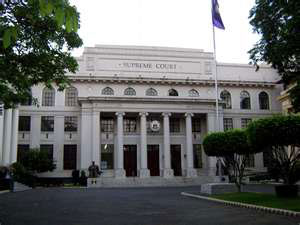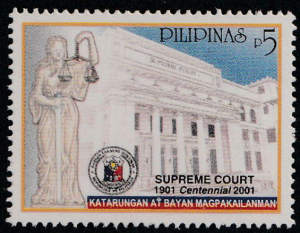Trivia about the Supreme Court
June 11, 1901 marks the birth of the Supreme Court. Act 136 of the Second Philippine Commission, otherwise known as the Judiciary Law, took effect on that date. By virtue of that law, judicial power in the Philippine Islands was vested in the Supreme Court, Courts of First Instance and Justice of the Peace Courts. Other courts were subsequently established under the authority of the said Act.
But even years prior to June 11, 1901 , institutions exercising judicial power were already in existence. Before the Spaniards came, judicial authority “in its primitive form” was in the hands of barangay chiefs. During the first years of the Spanish regime, these powers were vested upon Miguel Lopez de Legazpi, the first governor-general of the Philippines. He administered civil and criminal justice under the Royal Order of August 14, 1 569.
The present Supreme Court was preceded by the Royal Audiencia, a collegiate body established on l\4ay 5, 1583 and composed, among others, of a president, four oidores (justices), and a fiscal. It was the highest tribunal in the Philippines, below only the Consejo de indias of Spain. However, this body also exercised administrative functions in addition to its judicial responsibilities.
The Audiencia’s functions and structure underwent substantial modifications in 1815 when the president was replaced by a Chief Justice and the number of justices was increased.It then came to be known as the Audiencia Territorial de Manila v/ith h^ro branches, civil and criminal, later renamed sala de lo civil and sala de lo cildnal.The Attdtencia became a purely judicial body by Royal Decree on July 4, 1861 , with its decisions appealable to the Supreme Court oi Spain sitting in Madrid. On February 26. 1886. a territorial Audiencia was organ zed in Cebu, followed by an Audiencia for criminal cases in Vigan. However. the pre-eminence of the Supreme Court as the sole interpreter of the law was unknown during the Spanish regime.
When Manila fell to the American occupational forces, Gen. Wesley Merritt established a military government. suspended the criminal jurisdiction of the Audiencias and organized military commissions or courts-martial and provost courts. On May 29,1899, In,Major General Elweli S. Otis issued General Order No. 20 re-establishing the Audiencia and giving it jurisdiction over civil and criminal cases built only insofar as this was compatible with the sovereignty of the United States. The said Order named six Fiiipino members with Cayetano Arellano as the first Chief Justice. The Audiencia, however, was abolished with the enactment of Act 136″ The new Supreme Court promulgated its first decision on August 8,1901. The judicial structure introduced Act 136 it was reaffirmed by The US Congress with the passage of the Philippine Bill of 1902. The Administrative Code o{ 1917 ordained the Supreme Court as the highest tribunal with a Membership oi nine – a chief justice and eight associate justices.
From 1901 to 1935, although a Filipino as always appointed Chief Justice. The majority of the members of the Supreme Court were Americans. Complete Filipinization.was achieved only with the establishment of the Commonwealth in 1935. Claro M. Recto and Jose P. Laurel were among the first appointees to replace the American justices. With the ratification by the Filipino people of the 1935 Constitution in a plebiscite held on May 14, i935, the membership in the Supreme Court increased io i1- a chief justice and ten associate justices, who would sit en banc or in two divisions oi five members each.


Recent Comments